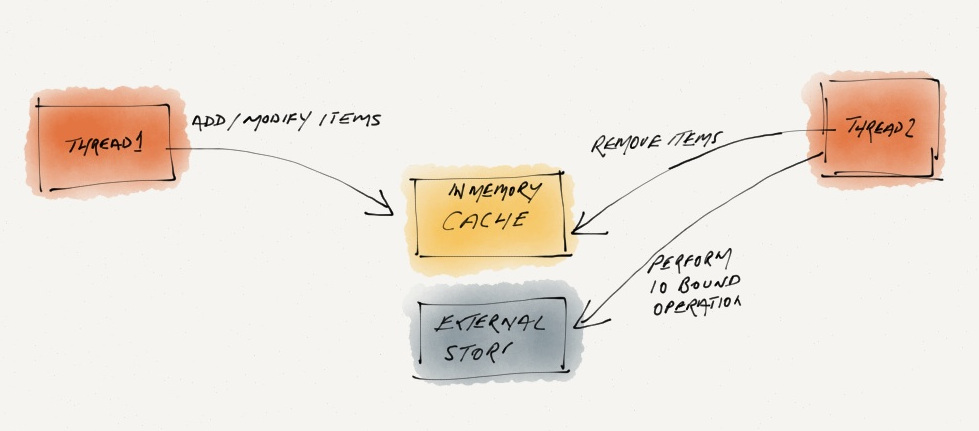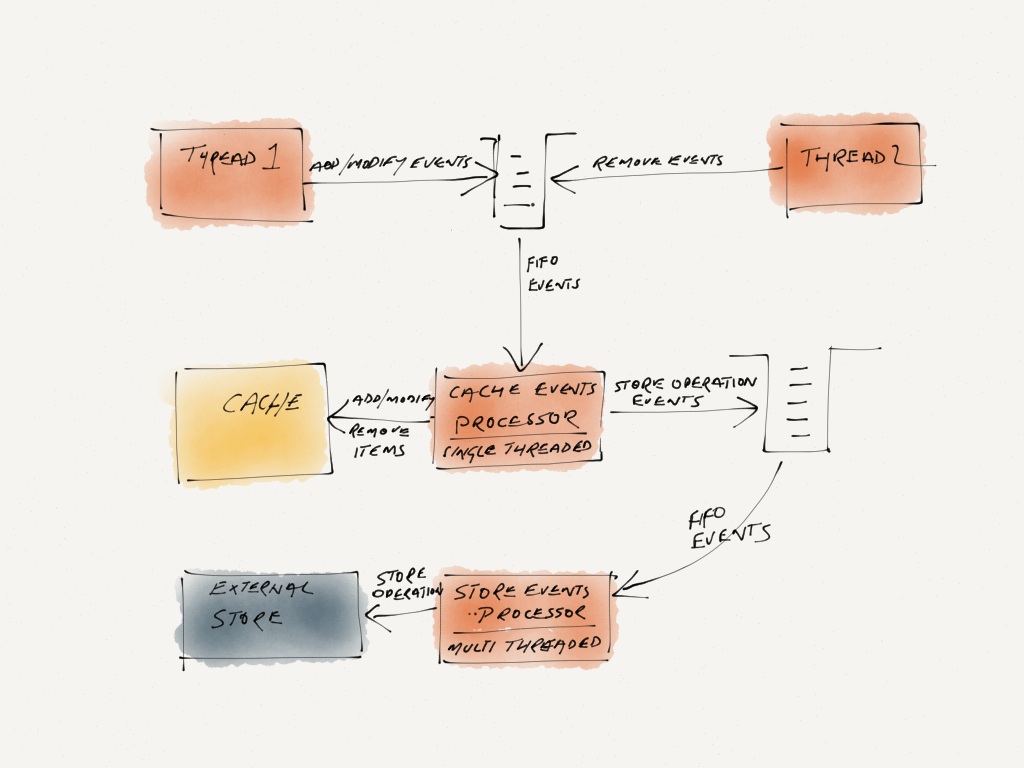
Mashooq Badar
See author's bio and postsThe first rule of using locks for thread synchronisation is, "Do NOT use them!". Recently I saw an implementation that made heavy use of locks to synchronise access to a shared cache between two threads. The overall approach is explained in the diagram below:

Why not do the whole thing in a single thread? Well! the operations to the External Store are very time consuming and Thread-1 does not need to wait for them. So how do you solve this without using lock-based synchronisation?
The operations to the cache are very quick and can be done in a single thread. These operations are coming from multiple threads. We can funnel them through a single thread by using a thread-safe queue as explained in the following diagram:

Although this solution looks more complicated, the key advantage is that no low-level thread synchronisation is needed. Most good programming languages already provide thread-safe queues. Also, you can scale up using a thread pool for the operations to the external store.
Note: in both of the above approaches we need to ensure that the cache does not grow indefinitely. In case of the queue based approach we can use a a queue that blocks after a maximum capacity is reached. In case of the lock based approach the cache itself will need to block.
Blogs relacionados


- Por Felipe Fernández
- ·
- Publicado 11 Jul 2016
State in scalable architectures

- Por Sandro Mancuso
- ·
- Publicado 23 Oct 2017
A Case for Outside-In Development
Get content like this straight to your inbox!
Software es nuestra pasión.
Somos Software Craftspeople. Construimos software bien elaborado para nuestros clientes, ayudamos a los/as desarrolladores/as a mejorar en su oficio a través de la formación, la orientación y la tutoría. Ayudamos a las empresas a mejorar en la distribución de software.
Últimos posts del blog
Codurance announces official Novoda Partnership...
Signs Your Software is Rotting...
Five Ways to Lead Positive...
Useful Links
Contacto
Londres, EC1M 5PU
Teléfono: +44 207 4902967
2 Mount Street
Manchester, M2 5WQ
Teléfono: +44 161 302 6795
Carrer de Pallars 99, planta 4, sala 41
Barcelona, 08018
Teléfono: +34 937 82 28 82
Correo electrónico: hello@codurance.es